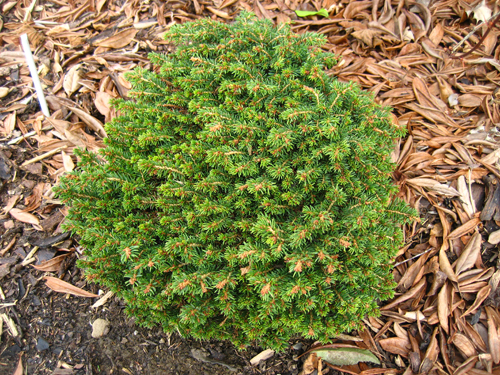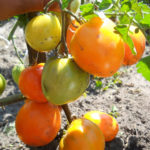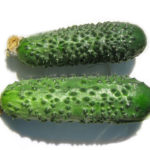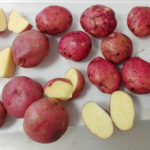Norway spruce Little Jam
This plant is sometimes called "Little Pearl of Norway", and it cannot be said that there is too much exaggeration in this. The appearance of the spruce cannot leave indifferent any lover of wildlife, especially a fan of conifers.

About the origin of the variety
Information has been preserved that it arose as a result of a natural mutation of the German variety, which was long known by that time. Nidiformis... A mutation occurred at the end of the 50s of the last century in the Dutch nursery FJ Grootendorst and Sons Nursery. Like the “parent plant”, the new spruce attracted the attention of connoisseurs and amateurs with its unusual appearance, and now it is a very popular ephedra.
Description of appearance
Quite a tiny variety of evergreen conifers; it is believed that this is the smallest of all varieties of Norwegian (ordinary) spruce. It is sometimes compared to a green sea hedgehog nestled against the ground and frozen for a while. The average height of the bush barely reaches 30-35 cm, and the width is about twice as large.
Unlike the Nidiformis spruce, our heroine does not have a flattening in the central part, she is convex. Her needles are short, no more than half a centimeter, soft, light green, and grows extremely densely on the branches. The branches are short, and also very dense, often tightly twisted with each other. From a distance of a few steps, Little Gem (Picea abies Little Gem) looks like a dense, impenetrable ball.

The slow growth rate of its branches is striking: they increase by only 2-3 cm per year! In the first decade, the crown, even without pruning, maintains the correct, rounded shape. But as it gets older, the spruce begins to grow more unevenly, and without care it can lose its symmetry.
The color of this "green hedgehog" is interesting. The spruce looks light green, but if you push the branches apart, it becomes clear that the overwhelming majority of the needles are much darker, and the light ones are only young growing tips.
Interesting! This variety does not form cones at all.
Use in landscape design
Most often, Little Jam is grown as a container plant. Indeed, in its size it is akin to ordinary indoor flowers, which makes it easy to transfer the pot from place to place. As a pot plant, it can be placed on a balcony, open loggia or terrace.

In the open air, it perfectly complements small slides, rockeries, heather gardens, very successfully and harmoniously combines with many roses, with other flowering plants. Due to its size, it can decorate a tiny garden corner with an area of only a few square meters.
Some features of care
In general, the variety is unpretentious, with high frost resistance (an adult plant can withstand up to -40 °). At the same time, young specimens still need to be covered for winter, otherwise individual frostbite spots on the crown may appear, which subsequently spoil the entire appearance.
According to the United States Department of Agriculture (USDA), ideal growing zones are 3rd and 4th, although they can be exploited up to 7th. Since the crown is under the snow, for the winter it needs a support from the bottom, otherwise the snow masses can break off the branches.
Loves cool and damp summers, can hardly endure hot, dry days. At such a time, the spruce needs regular spraying with cool water.
Like most conifers, this variety does not tolerate stagnant water in the ground. The soil should always be well drained, be light, but at the same time sufficiently fertile. Grows well on sandy loam and loamy soils, slightly acidic or neutral.
It tolerates shade well, but it is still preferable that the bush be illuminated by direct sunlight for at least a couple of hours a day.
Little Jam will be an excellent choice for a lover of dwarf conifers! As a container plant, it will decorate both a corner in the garden and an open winter balcony, not hiding under the snow, but remaining in full view of the owner.








